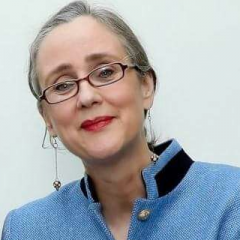Printing your own postal stamps





Not all that is handy is nice. Take, for instance, digital postal stamps. How can you positively feel nostalgic when you have to pen down a Sudoko sequence of 9 or 12 numbers on the top right corner of an envelope? I feel a bit like cheating on the art of philately.


DRESS -your stationary- TO IMPRESS
Dutch Post offers the possibility to order your own postal stamps. All you need is an image stored in your computer, upload it here, and Dutch Post turns it into an eye-catching stamp. Many countries offer this possibility. The stamps cost a few extra cents, but they are worth that.
Should you like to commission a postal stamp, there is no need to look further. I have designed postal stamps and I can do the same for you. All I need is your favourite theme, perhaps an animal, a butterfly, or a flower?
Here are a few of my designs: mandarin ducks, angel wings, and/or Christmas stamps.




The wonderful thing about a commission is that you might use the commissioned drawing also for a personalized bookplate.
Contact me freely to discuss your wishes.
Paula Kuitenbrouwer



LATEST & RELATED POSTS & ARTICLES
- The Artist’s Life
- Swedish Death Cleaning or Döstädning & Dementia
- Swedish Death Cleaning Part 3.
- Swedish Death Cleaning Part 2.
- Self Portrait
-
Mandarin Duck Cards, Various Art Cards, Prayer & Well-Wishing Cards
Where to find beautiful and professionally printed art cards without opening an account? At Paula Kuitenbrouwer’s art shop which is part of her website that has welcomed nearly 190.000 visitors.
-
Angels’ Wings
Angels’ wings … how do they look like? Do they have to resemble birds’ wings? Or can we express the wonders of the mystical realm in various creative ways? Creatively inspired by the elegant way bird wings have been added to human models in fine arts, artist Paula Kuitenbrouwer has set out to paint various…
-
Best Visited Articles: 184.000 views (and counting)
Almost 190.000 views on a small, personal art website prompts a fresh new index. Paula Kuitenbrouwer, artist living in Utrecht, the Netherlands, explains her art and writings categorized in various ways.
-
The Artist’s Life
Minimalist or Maximalist art? A cluttered or decluttered studio? How to check your composition? Here you find answers and inspiration.
-
Swedish Death Cleaning or Döstädning & Dementia
Would it be possible that Swedish Death Cleaning helps to delay (among other interventions like good health and exercises) dementia? Paula Kuitenbrouwer offers her döstädning musings.
-
Swedish Death Cleaning Part 3.
Swedish Death Cleaning Part 3 follows on Swedish Death Cleaning for Artists and Writers and Part 2. This part focuses on not feeling embarrassed but celebrating your aspirations.













